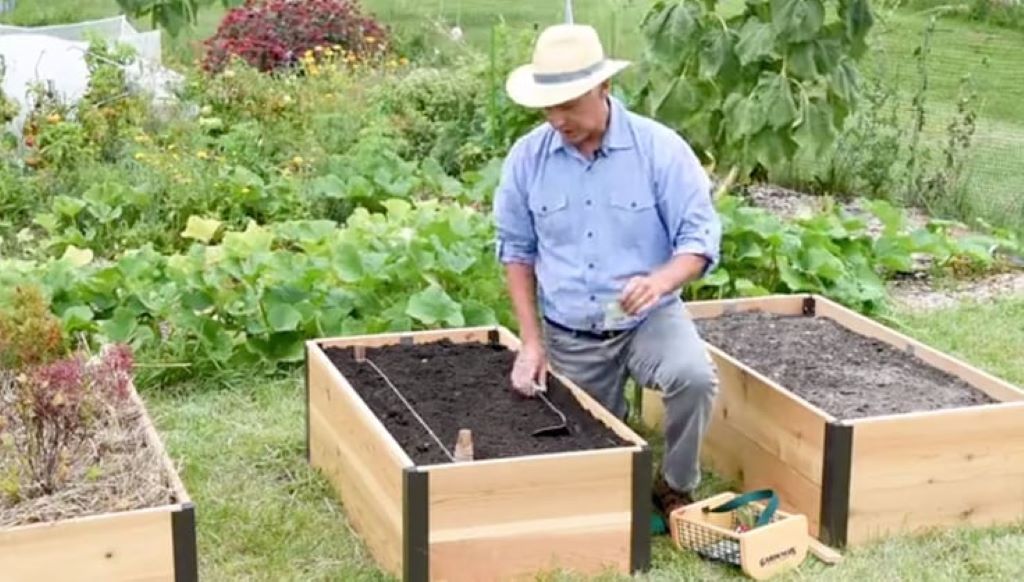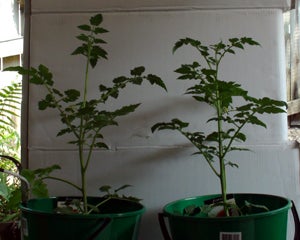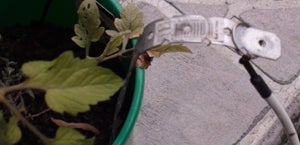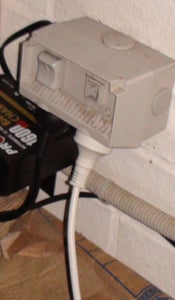Grounding your garden is one of the most beneficial things you can do for your plants. Though not a well-known technique proper grounding re-connects your plants to the earth’s natural electron flow. This reduces plant stress and promotes faster more vigorous growth.
In this comprehensive guide, we’ll cover everything you need to know about grounding your garden beds containers and potted plants.
What is Grounding and Why is it Important?
Grounding refers to electrically and physically connecting plants to the earth. In nature, plant roots access a constant supply of free electrons from the soil. However, in an indoor or container garden, plants lose this natural ground connection.
By providing an artificial ground you can restore a plant’s contact with the earth’s negative electrons. This is crucial because grounding
- Reduces physiological stress
- Enhances photosynthesis
- Protects plants from electrical interference
- Improves soil structure
- Deters pests and diseases
Overall, proper grounding techniques allow plants to absorb more nutrients and grow more efficiently. Implementing grounding can make a noticeable difference in plant vigor, productivity, and resilience to environmental stress.
Choosing the Right Grounding Materials
Here are the recommended materials for assembling your garden grounding system:
- Grounding rods – Copper, galvanized steel, or stainless steel rods (3/4″ x 8′ ideal)
- Grounding wire – 12-14 gauge bare copper wire
- Connections – Pipe clamps, split bolts, alligator clips
- Conductive mesh/strips – Copper mesh, chicken wire, hardware cloth
- Moisture – Rainwater or tap water to maintain conductivity
Aim for corrosion-resistant metals like copper that won’t degrade over time. Secure physical and electrical contacts are also critical when linking grounding components.
How to Ground Garden Beds
Follow these key steps to properly ground your in-ground or raised garden beds:
-
Install grounding rods around the perimeter of beds, at least 12-18 inches deep and 6-10 feet apart.
-
Connect the rods with 12-14 gauge bare copper grounding wire, buried 2-6 inches underground.
-
Bury conductive metal mesh or strips horizontally along the base of beds to link with the vertical grounding system.
-
Thoroughly wet down soil/growing medium to activate grounding. Mulch helps retain moisture.
-
Test the grounding connection with a voltmeter. It should read near 0V when completely grounded.
Proper placement of grounding rods and secure wiring connections are vital for success. Consider re-testing and reinforcing the system each growing season.
Tips for Grounding Containers and Potted Plants
Container plants need grounding too. Here are some options:
-
Insert a grounding rod directly into the potting mix.
-
Bury copper mesh strips into pots with ends protruding to connect.
-
Use a buried flat copper plate or mesh screen connected to a ground wire.
-
Drive galvanized nails into the bottom of plastic pots, connected to grounding wire.
-
Place pots on grounded metal trays.
Get creative with finding ways to ground your potted plants for optimal access to the earth’s electron flow. Ensure a reliable connection between containers and the grounding system.
Where to Install Grounding Rods
Ideal grounding rod placement includes:
-
At least 12-18 inches deep in moist soil
-
Around the perimeter of garden beds
-
Near large metal objects like pipes to utilize their grounding effect
-
6-10 feet apart for proper coverage
-
Away from power lines, cables, and irrigation pipes to prevent interference
Focus on sinking rods vertically along the edges or corners of your garden site. Proper depth and spacing ensures a good grounding effect.
Additional Tips for Success
Here are some extra pointers for getting the most out of grounding:
-
Use rainwater or tap water to enhance soil conductivity. Avoid distilled or deionized water.
-
Limit use of raised beds with treated wood, which blocks grounding. Grow in native soil when possible.
-
Connect rain barrels and irrigation systems to the grounding system.
-
Use copper pipes for trellises and downspouts to boost grounding.
-
Test and reinforce connections annually.
-
Water frequently to maintain moist soil.
Get innovative with finding ways to maximize your garden’s earth connectivity through proper grounding.
See the Growth Difference with Grounding
Implementing a high quality grounding system makes a measurable impact on plant performance. It’s an easy yet highly effective way to tap into the earth’s natural resources for stronger, healthier, more productive plants.
Grounding reduces a plant’s electrical stress and allows it to grow to its full genetic potential. Follow the steps outlined to properly ground your garden beds, containers, and potted plants.
Be sure to use quality materials and make secure connections. Then observe as your grounded plants thrive with improved vigor, hardiness and yields! Proper grounding could take your garden to the next level.

Introduction: Ground Any Plants for Optimal Results in Growth Rates


Grounding is a little known yet a very powerful subject.
This principle works on plants and especially potted plants.
The idea is that when you pot a plant or remove it from the soil you have disconnected it from the earth and all the negative electrons the plant needs.
When you pot a plant especially in plastic pots, it becomes insulated ad starts picking up the AC electricity in the air causing growth stunting.
To stop the stunting you need to reconnect the plant with its natural environment – the earth.
If you have located the plant near a power point this task is extremely, due to lightning all power points need to be grounded.
If you follow the instructions in the next step you will be able to ground your own plants and start enjoying the benefits!
Step 1: Making the Grounding Lead.



This is so simple and yet it is so effective.
All you need to do is get yourself a normal power lead with three prongs, one is positive – one is neutral – one is earth/ground.
Snap off the positive and neutral prongs and file them flat to the surface of the plug like shown.
On the other end you need to find the earth cord and strip it, wrap it around a metal keyring and then finish it off with some heat shrink.
When you have finished your lead you can now connect it to the plant.
Firstly get yourself a strip of metal about 2mm thick and 1″ wide.
Poke it into the pot being cautious not to break too much of the root system.
Connect the keyring to the strip of metal and plug the last end into the power point.
You do not need to turn on the power point, it makes no difference – earth is earth and it is connected 100% of the time.
Now to see the proof, check out the next step!
My Electroculture Gardening Setup! HIGH ENERGY PLANT GROWTH!
FAQ
How to do grounding in a garden?
Just walk around, enjoying a few moments of connecting with your garden before your day kicks into gear. Smell the flowers, feel the breeze, breathe in deeply and let your feet connect with the earth as you let the garden do its thing.
How to create an electromagnetic field around your garden?
It involves placing conductive materials, such as metal rods or wires, into the soil around plants, with the belief that they act as antennas to capture “free” energy and direct it toward the plants.
What does putting copper in your garden do?
Enhanced Nutrient Uptake: The electrical currents generated by copper coils stimulate root activity and increase the absorption of essential nutrients from …Jun 14, 2024
How do I prepare ground for my garden?
You pretty much just need a garden shovel and compost. Remove any grass or weeds at the surface level with the shovel. Then turn chunks of bare soil over with the shovel and break them up, and just keep doing that until it’s relatively smooth. You can mix in the compost on the later end of that process.
How do you ground a garden?
Position rods vertically along the edges or corners of your garden area. Depth and spacing are important for achieving an adequate grounding effect. Here are some additional tips for getting the most out of grounding your garden: Re-test and reinforce grounding connections each season.
Why should you ground your garden?
Overall, grounding reduces electrical stress and allows plants to grow more efficiently. Implementing proper grounding techniques in your garden can make a noticeable difference in plant performance and productivity.
How can grounding help your garden grow?
Try Grounding and See the Growth! Grounding can greatly enhance your garden’s productivity by reducing plant stress and improving access to the earth’s natural resources. Implementing a properly installed grounding system could be a game-changer for struggling vegetables, fruits, herbs and ornamentals.
Does grounding work on potted plants?
Ground Any Plants for Optimal Results in Growth Rates: Grounding is a little known yet a very powerful subject. This principle works on plants and especially potted plants. The idea is that when you pot a plant or remove it from the soil you have disconnected it from the earth and all the negative elect…
How do you ground a garden bed?
Use galvanized steel, solid copper, or stainless steel rods. 3/4″ diameter x 8′ length is ideal. Drive rods vertically into the ground around the perimeter of your garden beds, at least 12-18” deep. Space rods 6-10 feet apart. 2. Connect Grounding Wire Use a 12-14 gauge, single-strand copper grounding wire. Clamp wire securely to each rod.
How do you ground a potted plant?
Potted plants can be grounded too. Here’s how: For large pots, insert a grounding rod directly into the soil/potting mix. Bury strips of copper mesh or wire into containers, with ends protruding to connect to grounding system. Use flat metal plates or mesh buried in the soil with a ground wire attached.
